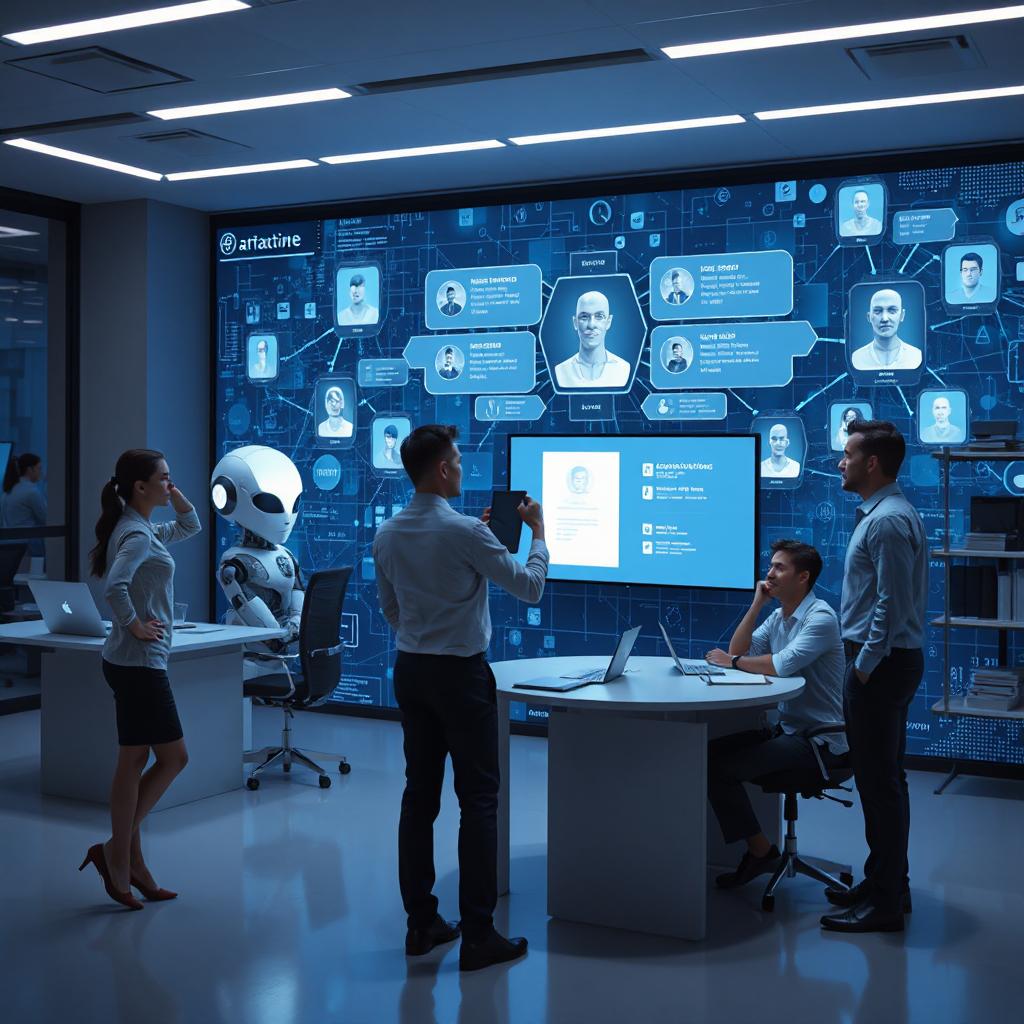 Imagine investing in cutting-edge AI hiring tools, expecting to streamline recruitment, eliminate bias, and secure top talent—only to discover your AI is silently sabotaging the process.
Imagine investing in cutting-edge AI hiring tools, expecting to streamline recruitment, eliminate bias, and secure top talent—only to discover your AI is silently sabotaging the process.
While AI promises efficiency, many companies unknowingly fall into hidden traps that compromise diversity, candidate experience, and even compliance. The irony? These pitfalls are often invisible until real damage is done—bad hires, lost talent, legal risks, and a tarnished employer brand.
So, how can you make AI work for you, not against you? Let’s uncover the five hidden pitfalls of AI-driven hiring and, more importantly, how to fix them in 2025 with actionable solutions that will set your HR team up for success
1. AI Bias: The “Invisible Discriminator”
The Pitfall:
AI hiring tools are trained on historical data. If that data contains bias (which it almost always does), AI learns and perpetuates discriminatory hiring patterns. A famous example? Amazon scrapped its AI hiring tool after it discriminated against women for technical roles.
The Solution (2025 Fix):
- Use diverse training data: Ensure AI models are trained on balanced datasets that reflect diversity in gender, ethnicity, and experience levels.
- Conduct AI bias audits: Regularly test AI decisions for bias and have human recruiters review flagged cases.
- Implement explainable AI (XAI): Opt for AI models that provide transparent decision-making, so you can spot and correct bias before it becomes a problem.
2025 Stat: Companies that proactively audit AI hiring models for bias see a 27% increase in diverse candidate hiring. (Source: AIHR Analytics)
2. Over-Reliance on Resume Parsing
The Pitfall:
Most AI-driven hiring tools scan resumes for keywords, often overlooking soft skills, leadership potential, and cultural fit. This leads to the rejection of high-potential candidates who don’t perfectly match predefined criteria.
The Solution (2025 Fix):
- Leverage AI-powered video assessments: AI can analyze speech patterns, problem-solving approaches, and communication skills.
- Combine AI with human expertise: Have recruiters manually review resumes flagged as “borderline” by AI.
- Use competency-based matching: Train AI to prioritize skills and potential over rigid job titles.
2025 Insight: Companies using a hybrid AI-human approach in recruitment see 35% better long-term employee performance. (Source: HBR)
3. The “Ghost Candidate” Problem: Qualified Applicants Get Ignored
The Pitfall:
Many AI hiring systems incorrectly filter out strong candidates due to overly rigid algorithms. This results in a talent pool filled with algorithm-friendly candidates, not necessarily the best ones.
The Solution (2025 Fix):
- Adjust AI filters dynamically: Use real-time feedback loops to adjust hiring algorithms based on recruiter input.
- Allow human intervention: Set up alerts for recruiters when AI rejects a high number of strong applicants.
- Use AI chatbots for engagement: AI-driven chatbots can keep candidates engaged, preventing top talent from slipping away.
2025 Reality Check: AI rejection errors cost companies $1.2 million annually in missed hiring opportunities. (Source: LinkedIn Talent Solutions)
4. Lack of Ethical & Legal Compliance
The Pitfall:
AI hiring tools must comply with GDPR, EEOC guidelines, and AI ethics laws. Non-compliance leads to legal risks, lawsuits, and reputational damage.
The Solution (2025 Fix):
- Adopt AI Ethics Frameworks: Follow guidelines from OECD AI Principles and HR AI Ethics Boards.
- Maintain audit trails: Keep a transparent record of AI-based hiring decisions to prove compliance.
- Ensure candidate consent: Inform applicants when AI is making hiring decisions and give them an option to request human evaluation.
Legal Insight (2025): AI-driven hiring lawsuits increased 40% in 2024, highlighting the urgent need for compliance. (Source: HR Compliance Journal)
5. Ignoring Candidate Experience
The Pitfall:
Many AI hiring systems focus solely on employer needs, neglecting the candidate’s experience. Impersonal AI interactions lead to lower application rates and negative employer branding.
The Solution (2025 Fix):
- Use AI for personalized interactions: AI should provide real-time feedback, interview tips, and tailored job recommendations.
- Make AI-driven hiring transparent: Clearly explain how AI evaluates candidates to build trust.
- Monitor AI candidate drop-off rates: If applicants abandon applications, tweak AI workflows for a smoother experience.
2025 Candidate Trend: 72% of job seekers prefer AI-assisted hiring when it includes personalized feedback and transparent evaluation criteria. (Source: Adecco AI Hiring Report)
Final Thoughts: AI + Human = The Future of Hiring
AI is not a replacement for human recruiters. Instead, it should be an augmentation tool that makes hiring more efficient, fair, and effective.
By avoiding these five hidden pitfalls, HR leaders and AI enthusiasts can harness AI’s true potential while ensuring ethical, compliant, and candidate-friendly hiring practices.
What’s Next?
Audit your AI hiring system for bias and fairness.
Train HR teams on AI-driven compliance and ethics.
Use AI strategically, balancing automation with human judgment.
By 2025, the companies that get AI hiring right will attract and retain the best talent. Will yours be one of them?
Share Your Thoughts!
Have you experienced AI hiring challenges in your organization?
What strategies worked for you? Drop a comment below!

